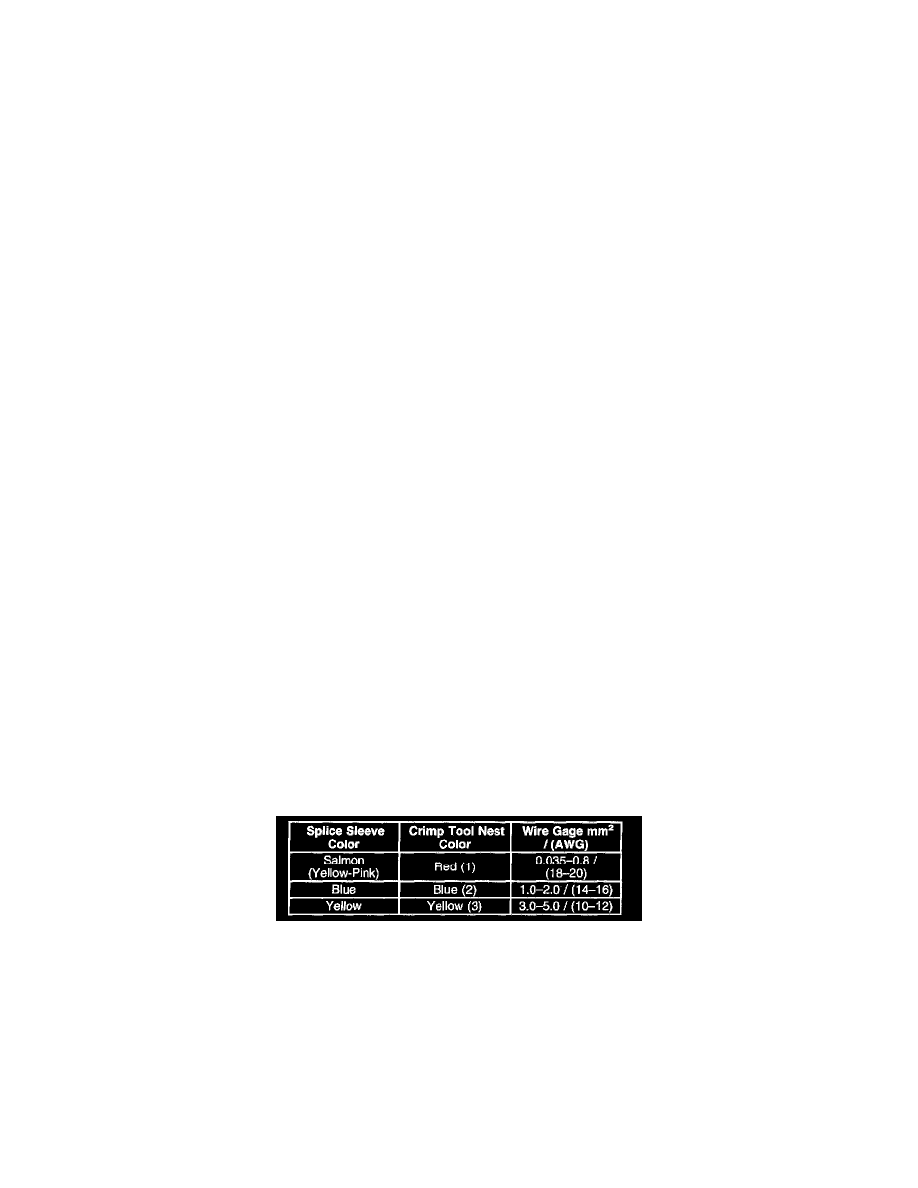S15/T15 Sonoma P/U 2WD L4-2.2L VIN 5 Flex Fuel (2001)

the new wires, connectors, and terminals to the harness. The splice crimping tool is color keyed in order to match the splices from the J 38125-B. You
must use the splice crimping tool in order to apply these splices.
The terminals in the SIR/SRS system are made of a special metal. This metal provides the necessary contact integrity for the sensitive, low energy
circuits. These terminals are only available in the connector repair assembly packs. Do not substitute any other terminals for those in the assembly packs.
If the individual terminals are damaged on the sensing and diagnostic module (SDM) harness connector, use 1 of the following 2 components in order to
replace the SDM harness connector:
^
The SDM harness connector pigtail assembly
^
The 5DM harness connector replacement kit
If the individual terminals are damaged on any other SIR/SRS connection, use the appropriate connector repair assembly pack in order to replace the
entire connection. Replace the entire SIR/SRS wiring harness, if needed, in order to maintain SIR/SRS circuit integrity.
SIR/SRS System Wire Splice Repair
Apply a new splice (not sealed) from the J 38125-B if damage occurs to any of the original equipment splices (3 wires or more) in the SIR/SRS wiring
harness. Carefully follow the instructions included in the kit for proper splice clip application.
Connector Position Assurance (CPA)
The connector position assurance (CPA) is a small plastic insert that fits through the locking tabs of all the SIR/SRS system electrical connectors. The
CPA ensures that the connector halves cannot vibrate apart. You must have the CPA in place in order to ensure good contact between the SIR/SRS
mating terminals.
Terminal Position Assurance (TPA)
The terminal position assurance (TPA) insert resembles the plastic combs used in the control module connectors. The TPA keeps the terminal securely
seated in the connector body. Do not remove the TPA from the connector body unless you remove a terminal for replacement.
SIR/SRS Wire Pigtail Repair
IMPORTANT: Do not make wire, connector, or terminal repairs on components with wire pigtails.
A wire pigtail is a wire or wires attached directly to the device (not by a connector). If a wiring pigtail is damaged, you must replace the entire
component (with pigtail). The inflatable restraint steering wheel module coil is an example of a pigtail component.
SIR/SRS Wire Repair
TOOLS REQUIRED
J 38125-B Terminal Repair Kit
IMPORTANT: Refer to Wiring Repairs in Diagrams in order to determine the correct wire size for the circuit you are repairing. You must obtain this
information in order to ensure circuit integrity.
If any wire except the pigtail is damaged, repair the wire by splicing in a new section of wire of the same gauge size (0.5 mm, 0.8 mm, 1.0 mm etc.).
Use the sealed splices and splice crimping tool from the J 38125-B. Use the following wiring repair procedures in order to ensure the integrity of the
sealed splice.
IMPORTANT: You must perform the following procedures in the listed order. Repeat the procedure if any wire strands are damaged. You must obtain
a clean strip with all of the wire strands intact.
1. Open the harness by removing any tape:
^
Use a sewing seam ripper (available from sewing supply stores) in order to cut open the harness in order to avoid wire insulation damage.
^
Use the crimp and sealed splice sleeves on all types of insulation except tefzel and coaxial.
^
Do not use the crimp and sealed splice sleeve to form a splice with more than 2 wires coming together.
2. Cut as little wire off the harness as possible. You may need the extra length of wire in order to change the location of a splice.
Adjust splice locations so that each splice is at least 40 mm (1.5 in) away from the other splices, harness branches, or connectors.
3. Strip the insulation:
^
When adding a length of wire to the existing harness, use the same size wire as the original wire.
^
Perform one of the following items in order to find the correct wire size:
-
Find the wire on the schematic and convert the metric size to the equivalent AWG size.
